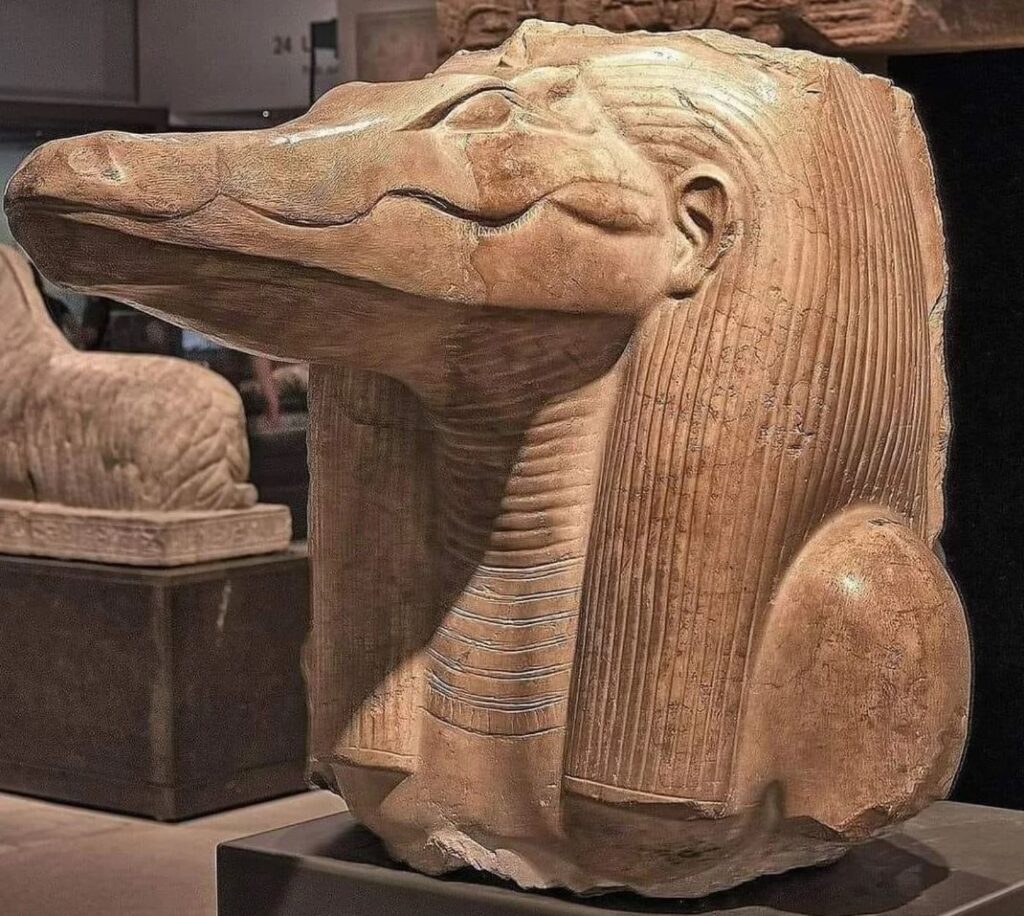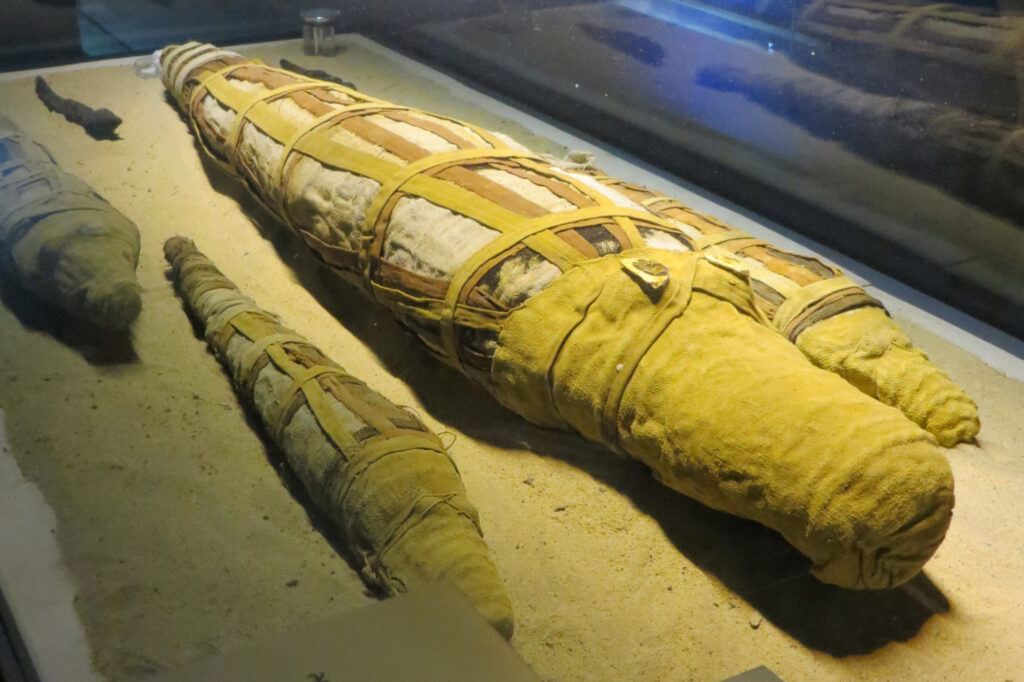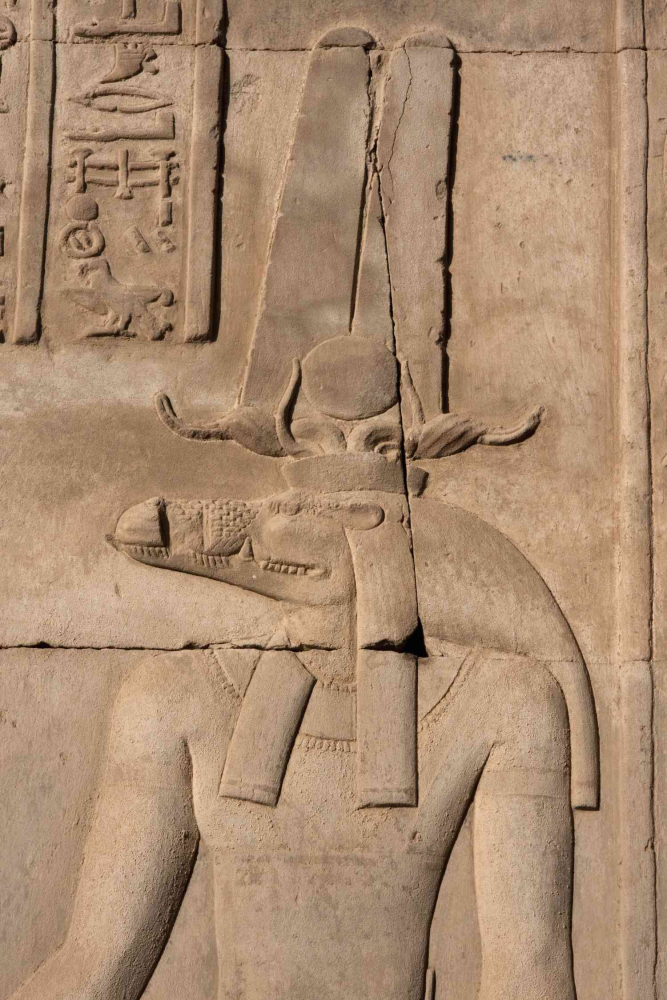Mythology Fact #1 – Sobek, Egyptian Crocodile God
NEW SERIES! Mythology Facts will explore many elements of world mythologies, but with a particular focus on Greek, Egyptian, and Norse, especially at the start.
Easily the winner of the first poll about this new series as held on my Patreon is Sobek, the ancient Egyptian crocodile-headed god!

In ancient Egypt, like many ancient cultures, the most fearsome of beasts were highly regarded for their awe-inspiring endurance, power, and ferocity – a concept often little-understood today, as animals are now often seen as obstacles to be conquered or put out of the way, hence why it can occasionally be difficult to detail to the modern mind the relationship between men and wolves throughout history (but I’m not on that right now, so I’ll stop). The people of ancient Egypt held great reverence for many animals, not least among them being the obviously very dangerous crocodile.
An integral part of life in ancient Egypt was the rise and fall of the Nile. Sobek was a centerpiece of the Nile life – crocodiles were abundant, a testament to their fertility and virility, and they were fearsome, strong, and enduring. Sobek’s nature is intensely complex and his “domains,” as we so often think of deities as having, were extensive, including but not limited to fertility, virility, illness, health, strength, pharonic power, military might, protection (especially protection from, essentially, bad luck), and the dangers and wonders of the Nile. By nature, he was considered animalistic, unpredictable, strong, protective but dangerous, and highly sexual, aspects frequently associated with the most powerful predators in a given region (notice all those things are also associated with wolves). Sobek was depicted variably as a crocodile and a crocodile-headed man, and holy crocodiles were kept in his name.
Given his association with the Nile and so many other things, Sobek was and mostly remained a very important figure, especially with his later fusion with/association with both Horus and Ra, two extremely important deities.
Among many other things, Sobek was said to have power of the fertility of the Nile’s soil, as well as its waters, and thus also had great power over disease, as the Nile could also cause illnesses. Like so many ancient Egyptian deities, Sobek also had an association with the dead, being called upon to bring them sight and return their senses in the afterlife, as well as to assist in protecting them (along with many other deities, including but certainly not limited to Isis, Nephthys, and Anubis).
Sobek’s strong association with fertility is found in his many epithets and even the name we use for him most – “Sobek” is thought to perhaps even come from a causative of “to impregnate” (though some scholars contend it instead means “to unite,” especially in relation to the pieces of Osiris). Perhaps the first instance we have of Sobek in a text comes from the Pyramid Texts, in which a spell refers to Unis (the pharaoh) as a living incarnation of Sobek – the pharaohs were very often living incarnations of assorted deities at various times – and says that Unis “will copulate” very specifically and that he is the lord of something that would probably get this post censored, “who takes women from their husbands to the place Unis likes according to his heart’s fancy.”

Now let’s talk about a thing called the petsuchos. Mummified crocodiles served as images of Sobek in various forms, one of which being Petsuchos, meaning “son of Sobek.” It is thought one crocodile in particular took on the aspect of the petsuchos and was kept in Shedet, replaced by a new petsuchos whenever the previous died. Following the death of a holy crocodile, a great ritual took place to mummify the creature and then put it on display, as it remained ever sacred. Living crocodiles were sometimes kept in other temples and holy places, even including outdoor pools. They were adorned with gems and fed delicacies; some were even considered attractions, as feeding the holy crocodile brought good luck, given Sobek’s apotropaic nature. There was even a divine crocodile breeding center established by Amenhotep III (who pushed the Sobek cult quite energetically).

There are many depictions of Sobek found throughout what we have of ancient Egypt, including many of its time periods. He is perhaps one of the oldest gods of ancient Egypt, having appeared as early as during the reign of King Narmer in the first dynasty. His importance during the Old Kingdom, as well, can be found in the Pyramid Texts. The entire region of Fayum was a cult center of Sobek, so great was his importance, the seat of which was – of course – the capital, Crocodilopolis or Shedet.
Also very worthy of note is Sobek-Ra, a combination of the gods Sobek and Ra, that appeared in very late-age Egypt in the New Kingdom (1150-1069 BC), and even continued into the Ptolemaic Period (around 332 BC to 390 AD). Sobek-Ra (or Sobek-Re if you want to go that way) may have first appeared during the reign of the first king of the Middle Kingdom, Montuhotep II, as addressed in the Coffin Texts used during the Middle Kingdom (in which Sobek is addressed as “he who rises in the east and sets in the west”). As a combination, depictions thereof often had the head of a falcon but the body of a crocodile, often wearing the solar disc and uraeus (cobra).
He combined aspects of both deities, which is also perhaps thanks to Sobek’s association also with Horus. When Horus took on the aspect of a crocodile during his retrieval of Osiris’s bodyparts, Sobek became associated with him, even considered an aspect of Horus. Likewise, however, Sobek also was said to have assisted Isis during Horus’s birth. Such deity fusions, aspects, and deities becoming an aspect and/or appearing in various myths in nebulous forms were not uncommon in ancient Egypt, and Sobek was also combined with Horus at assorted other points. All of this continues to point to the association between Sobek and kings (pharaohs), especially when you reach the point of learning about Sobek of Shedet-Ra-Horus, but I won’t go into all that here due to time constraints.
So, obviously, there’s so much more to say that it’s, frankly, crazy and almost overwhelming. The study of ancient Egypt is a complex undertaking, hence why we have an entire field called Egyptology. So, consider this very much a simplified overview. Hope you enjoyed the post!